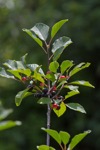Notice (8): Undefined index: geoplugin_countryCode [APP/Controller/AppController.php, line 94]Code Context$Country_code = '';if($ip_data && $ip_data['geoplugin_countryCode'] != null) {$Country_code = $ip_data['geoplugin_countryCode'];$client = null $forward = null $remote = '216.73.216.24' $ip = '216.73.216.24' $ch = unknown $ip_data_in = '{ "geoplugin_status":429, "geoplugin_message": "Blacklisted due to sending too many requests to geoplugin.net. Consider whitelisting your IP or domain", "geoplugin_url": "https://www.geoplugin.com/premium/" } ' $ip_data = [ 'geoplugin_status' => '429', 'geoplugin_message' => 'Blacklisted due to sending too many requests to geoplugin.net. Consider whitelisting your IP or domain', 'geoplugin_url' => 'https://www.geoplugin.com/premium/' ] $Country_code = ''App\Controller\AppController::initialize() - APP/Controller/AppController.php, line 94 App\Controller\ProductsController::initialize() - APP/Controller/ProductsController.php, line 31 Cake\Controller\Controller::__construct() - CORE/src/Controller/Controller.php, line 273 ReflectionClass::newInstance() - [internal], line ?? Cake\Http\ControllerFactory::create() - CORE/src/Http/ControllerFactory.php, line 47 Cake\Http\ActionDispatcher::dispatch() - CORE/src/Http/ActionDispatcher.php, line 91 Cake\Http\BaseApplication::__invoke() - CORE/src/Http/BaseApplication.php, line 235 Cake\Http\Runner::__invoke() - CORE/src/Http/Runner.php, line 65 Cake\Http\Runner::__invoke() - CORE/src/Http/Runner.php, line 65 Cake\Http\Middleware\CsrfProtectionMiddleware::__invoke() - CORE/src/Http/Middleware/CsrfProtectionMiddleware.php, line 104 Cake\Http\Runner::__invoke() - CORE/src/Http/Runner.php, line 65 Cake\Http\Runner::run() - CORE/src/Http/Runner.php, line 51 Cake\Routing\Middleware\RoutingMiddleware::__invoke() - CORE/src/Routing/Middleware/RoutingMiddleware.php, line 168 Cake\Http\Runner::__invoke() - CORE/src/Http/Runner.php, line 65 Cake\Routing\Middleware\AssetMiddleware::__invoke() - CORE/src/Routing/Middleware/AssetMiddleware.php, line 88 Cake\Http\Runner::__invoke() - CORE/src/Http/Runner.php, line 65 Cake\Error\Middleware\ErrorHandlerMiddleware::__invoke() - CORE/src/Error/Middleware/ErrorHandlerMiddleware.php, line 96
| Scientific: | Rhamnus frangula |
|---|---|
| Other: | Alder Buckthorn |
| Family: | Rhamnaceae |
Different herbal traditions use the buckthorn as stimulating laxatives. Alder Buckthorn (Rhamnus frangula) and Common Buckthorn (Rhamnus cathartica) originate in Europe but now grow wild in North America. Cascara buckthorn's (Rhamnus purshiana) native range spreads from western Canada to northern California. The bark of these shrubs contains anthraquinone glycosides. Gut bacteria activate these compounds in the large colon. The free anthraquinones inhibit the absorption of electrolytes in the colon thus causing an influx of water into the lumen of the bowel and promoting peristalsis. Anthraquinone containing herbs typically produce a bowel movement within 6-8 hours of taking them. The different species of buckthorn and also other anthraquinone containing laxatives (senna, aloe resin, and rhubarb) produce virtually the same effects in the body. No major difference exists.
Avoid using the fresh bark of buckthorn because it causes nausea, severe cramping pains, and catharsis. Drying and storing the bark for a year reduces its acridity and makes the preparation suitable for medicine.
Gastrointestinal
• acute constipation
• Laxative (Stimulating)
• Cathartic
• Bitter
• Anthraquinone (E.g. Emodin )
• Tincture (1:5 in 45% EtOH): 1-5 ml tid
• Fluid extract (1:1 in 25% EtOH): 0.6-2 ml tid
• Decoction (dried bark at least one year old): 0.5-2.5 g
Note: will stimulate a bowel movement in roughly 8-10 hr. Usually recommended to take before sleep.
Contraindications: Use > 10 consecutive days, bulimia, intestinal obstruction, spastic constipation, acute intestinal inflammation, abdominal pain of unknown origin, children < 12 years old, pregnancy, lactation.
Side-effects: Red urine (benign), hypokalemia, colic; common with anthraquinones due to increased parastalsis and smooth muscle spasms. Carminatives decrease side-effects.
Warning: Discontinue use after 7-10 days.
Long-term use: Hypokalemia, dependency, intestinal paralysis, irritable bowel syndrome (IBS), pancreatitis, renal failure, melanosis coli.
• Hypokalemic agents • caution taken it concomitantly with drugs and herbs that depleted potassium: antiarrhythmic drugs (e.g. quinine), cardiac glycoside (e.g. digitallis), diuretics, corticosteroids and licorice (Glycyrrhiza glabra).
Barnes J, Anderson LA, Phillipson JD. Herbal Medicines, 3rd ed. London: Pharmaceutical Press, 2007.
Bone K. Principles and Practice of Phytotherapy. Edinburgh: Churchill Livingstone, 2000.
Bone K. A Clinical Guide to Blending Liquid Herbs: Herbal Formulations for the Individual Patient. St Louis, MO: Churchill Livingstone, 2003.
Brinker F. The Toxicology of Botanical Medicines, 3rd ed. Sandy, Oregon: Eclectic Medical Publications, 2000.
Felter HW, Lloyd JU. King's American Dispensatory. 1898. http://www.ibiblio.org/herbmed/eclectic/kings/main.html. Accessed: August 19, 2006.
Hoffman D. Medical Herbalism. Rochester, Vermont: Healing Arts Press, 2003.
Weiss RF. Herbal Medicine. Beaconsfield, England: Beaconsfield Publishers Ltd, 1988.
Williamson EM, ed. Major Herbs of Ayurveda. Edinburgh: Churchill Livingstone, 2002
Disclaimer: This content is subject to change. The information is intended to inform and educate; it does not replace the medical evaluation, advice, diagnosis or treatment by a healthcare professional. www.nhpassist.com © 2014 NDAssist Inc. and/or its affiliates. All rights reserved.

|
Alder Buckthorn
SummaryDifferent herbal traditions use the buckthorn as stimulating laxatives. Alder Buckthorn (Rhamnus frangula) and Common Buckthorn (Rhamnus cathartica) originate in Europe but now grow wild in North America. Cascara buckthorn's (Rhamnus purshiana) native range spreads from western Canada to northern California. The bark of these shrubs contains anthraquinone glycosides. Gut bacteria activate these compounds in the large colon. The free anthraquinones inhibit the absorption of electrolytes in the colon thus causing an influx of water into the lumen of the bowel and promoting peristalsis. Anthraquinone containing herbs typically produce a bowel movement within 6-8 hours of taking them. The different species of buckthorn and also other anthraquinone containing laxatives (senna, aloe resin, and rhubarb) produce virtually the same effects in the body. No major difference exists. IndicationsSign in requiredActionsSign in requiredConstituentsSign in requiredPosologySign in requiredSafetySign in requiredInteractionsSign in requiredReferencesSign in required |
|---|